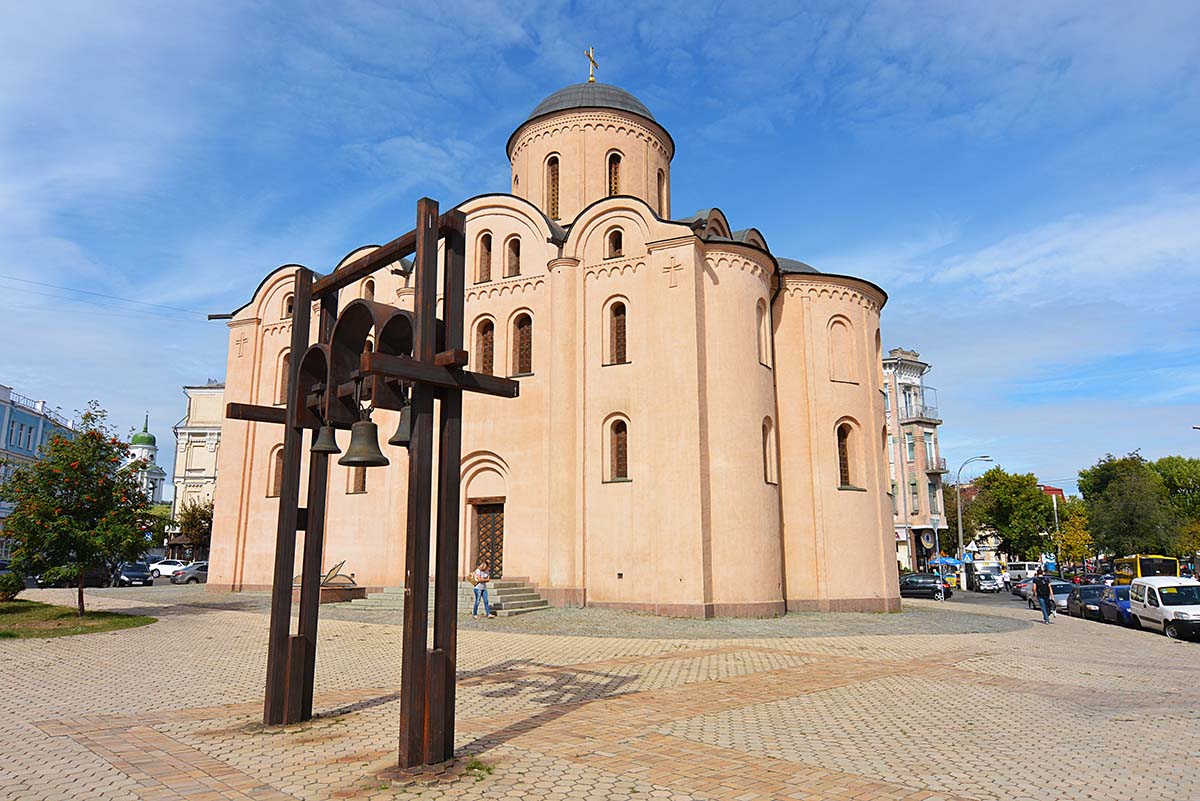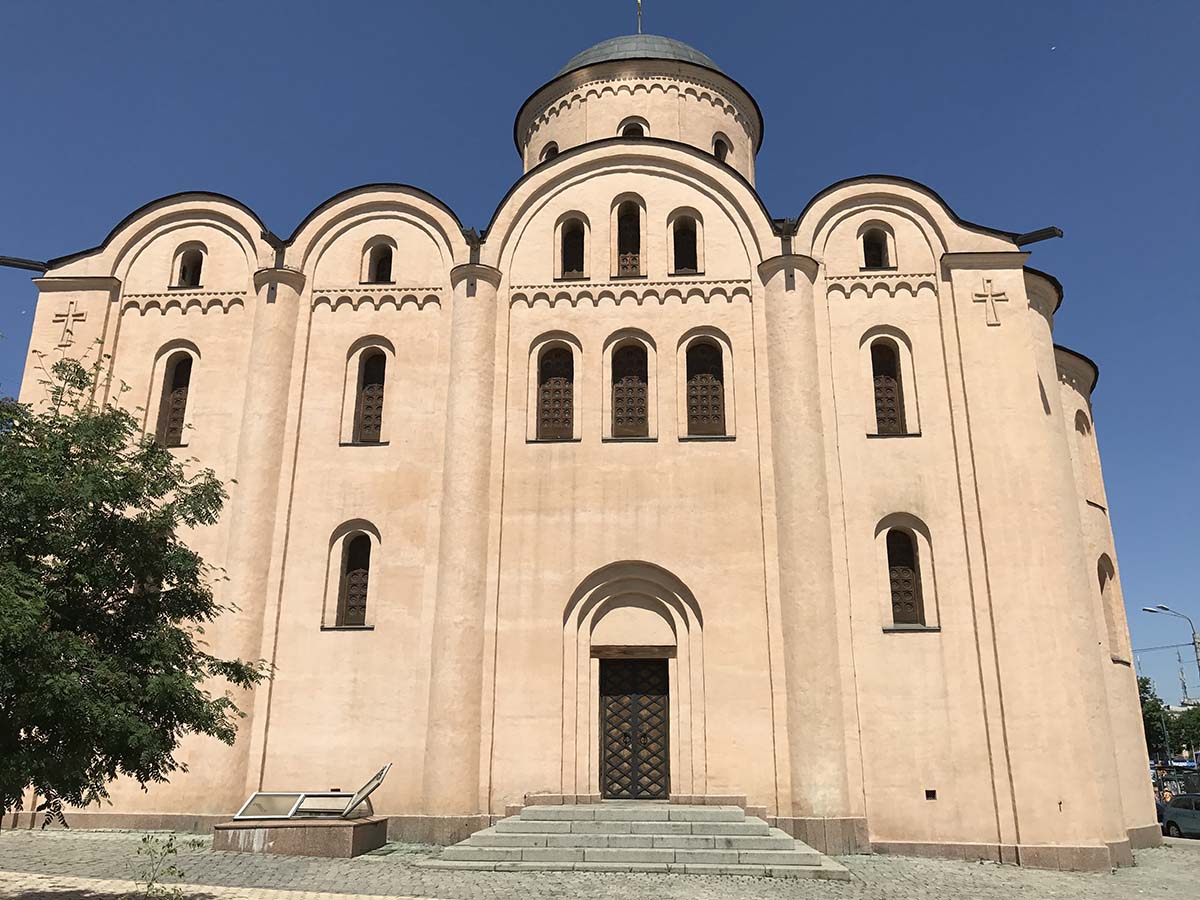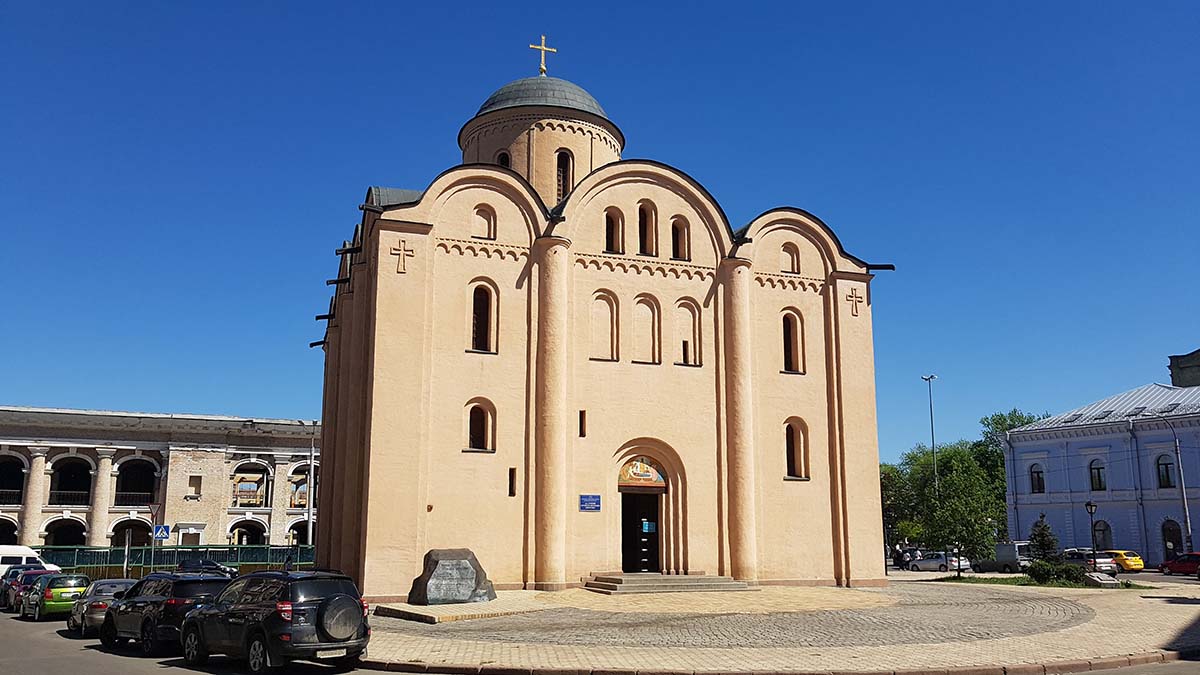According to the Laurentian Chronicle, the church was built in 1132-1136 during the reign of Mstislav the Great at the foot of Castle Hill. Mentioned in “The Tale of Igor’s Campaign” in connection with the return of the hero of this work, Prince Igor Svyatoslavich, to Kyiv from Polovtsian captivity. The temple was a small three-nave temple topped with a dome. The walls of the vault were decorated with frescoes, the floor with glazed and mosaic slabs. In 1240, the temple was almost destroyed during the Mongol invasion. By 1474 it was restored and festively consecrated, but already in 1482 it was again severely damaged during the raid of the Crimean Khan Mengli-Girey. In 1613-1614, after the fire of 1611, the church was reconstructed.
The Church of the Virgin Mary of Pirogoshchi served as a social center for the people of Kiev; later it housed a school, an orphanage, a hospital for the poor, and a city archive. In 1613-1633, when the St. Sophia Cathedral was captured by the Uniates during the inter-confessional struggle, the Church of the Virgin Pirogoshchi was one of the centers of the Kyiv Metropolis. In 1654, on the square in front of the temple, the Kyiv townspeople took the oath to Tsar Alexei Mikhailovich. Subsequently, solemn ceremonies of the Russian Brotherhood took place near the church.
The origin of the name of the temple is not precisely established. According to one version, during the times of Kievan Rus, in the temple there was a Byzantine icon of the Mother of God, called Pirogoshcha (from the ancient Greek Πυργοτίσσα “pyrgotissa” – “tower”). In Byzantium, this was the name for icons that were placed in the towers of monasteries or fortresses. According to the second version, the name “Pirogoshcha” consists of two parts: “pyro” and “goshcha”. “Gosha” comes from the word “guest” – merchant. The meaning of the word “pyro” (or “feast”) is associated with the Greek translation of the word “wheat”, the Old Slavic “millet”, “millet”, the Old Russian “pyra” – rye, flour, pie. This interpretation allows us to conclude that the church was built at the expense of merchants involved in the grain trade.
The temple was reconstructed again in the 1770s in Ukrainian Baroque forms by the architect Ivan Grigorovich-Barsky (project for the construction of Pokrovskaya Church and Nikolai Naberezhny Church). In the 19th century, after the major Podolsk fire of 1811, the monument was again reconstructed with elements of classicism by the city architect Andrei Melensky (Magdeburg Law, St. Nicholas Church on Askoldova Mogila, Church of the Nativity, Church of the Exaltation of the Cross). Until the beginning of the 20th century, the shape of the temple did not change, but it was demolished by decree of the Soviet government in 1935. In 1976-1979, archaeological excavations of the foundation of the temple, which reached 4 meters in depth, were carried out. The foundation was made from building material taken from an earlier structure. The church was rebuilt in 1997-1998 in the forms of Old Russian (Byzantine) architecture and consecrated by Metropolitan Filaret of the UOC-KP.
Where is the Church of the Assumption of the Virgin Pirogoshcha?
Kontraktovaya Square, 1
Divine services: morning at 09:00, evening at 17:00
(044) 4254842


